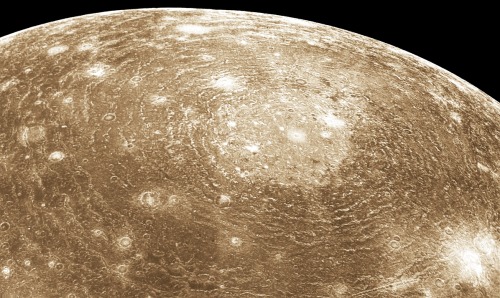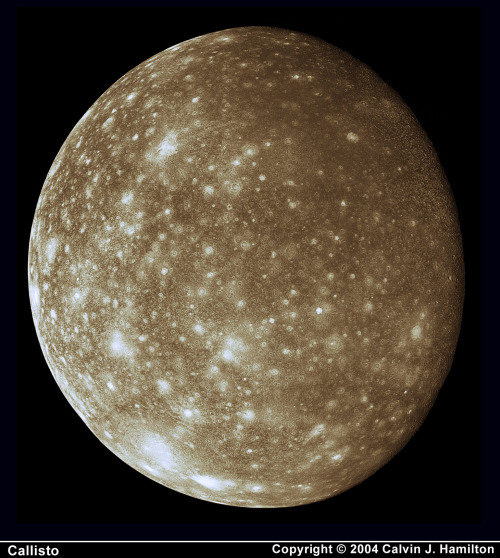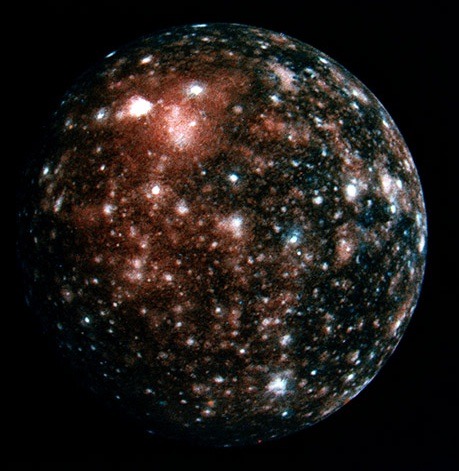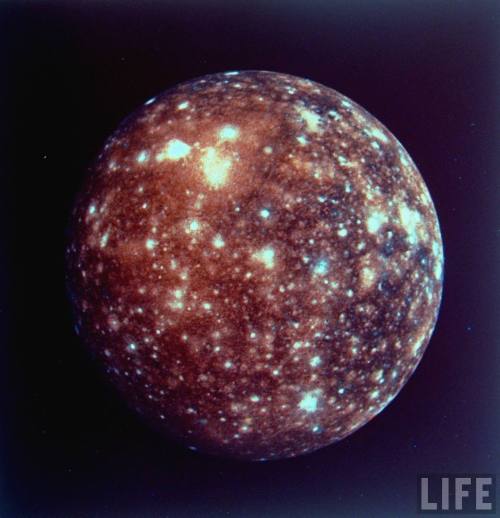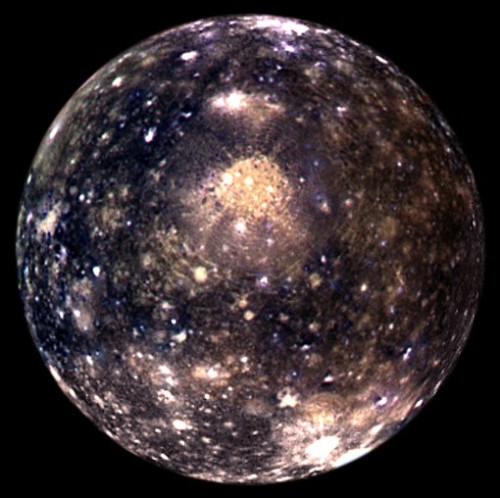Why Is There Star
why is there star
gas cloud get squished (gravitational collapse) then sometimes smaller elements can squish together to make bigger elements (nuclear fusion) and this continues as long as the smolest elements (hydrogen and helium) are in the core
More Posts from Fillthevoid-with-space and Others

The hardest part of determining longitude was figuring out how sailors could find their longitudinal coordinates at sea. There were a lot of methods proposed but adding a ship into the equation makes precision difficult. Learn about the Longitude Act of 1714 and how, even though this podcast loves astronomy, the astronomical method might not always be the best option.
Below the cut are my sources, music credits, a timeline of the astronomers and engineers and clockmakers I mention, a vocab list, a really cool resource that lets you drag continents all over a flattened map of Earth to compare their sizes at different latitudes, and the transcript of this episode. Let me know what you think I should research next by messaging me here, tweeting at me at @HDandtheVoid, or asking me to my face if you know me in real life. And please check out the podcast on iTunes, rate it or review it if you’d like, subscribe, and maybe tell your friends about it if you think they’d like to listen!
(My thoughts on the next episode were the Voyager golden records, space race history, the transit of Venus, or maybe something about the Moon landing. I’m loving Edmond Halley again these days, too. I’m prepping to interview a friend about her graduate-level research into the history of the universe and possibly dark matter, too. Let me know by the 20th and I’ll hopefully have the next podcast up on September 25th! If not then, I’ll push for October 2nd.)
Glossary
azimuth - a section of the horizon measured between a fixed point and the vertical circle passing through the center of an object. See example in the link.
equator - Earth’s zero line of latitude. It’s the place on Earth where the Sun is directly overhead at noon on the vernal and autumnal equinoxes.
kamal - an Arabic navigation tool consisting of a knotted string and a piece of wood. A navigator would tie a knot in the string and, by holding it in their teeth, sight the North Star along the top of the wooden piece and the horizon along the bottom. To return home, the navigator would sail north or south to bring Polaris to the altitude they had observed in their home port, then turn left or right and sail down the latitude, keeping Polaris at a constant angle. Over time, Arab navigators started tying knots at regular intervals of a fingerwidth, called an issbah, that’s about 1 degree and 36 minutes.
magnetosphere - an invisible barrier that surrounds a celestial objet. It is often generated by the movement of the liquid metal core of the object. Around a planet, it deflects high-energy, charged particles called cosmic rays that can either come from the Sun or, less often, from interstellar space.
prime meridian - Earth’s zero degree of longitude. In current maps and time zones, this invisible, imaginary line runs through London, England.
sextant - a device used to determine an observer’s location based on the observation of a known celestial object and a lot of calculation. It is still in use by sailors.
tropic of cancer - a line of latitude that marks where the Sun will be at noon on the summer solstice.
tropic of capricorn - a line of latitude that marks where the Sun will be at noon on the winter solstice.
Script/Transcript
Sources
Longitude at Sea via The Galileo Project at Rice University
Vitamin C necessity via University of Maryland Medical Center
Scurvy via NHS
Scurvy via the Encyclopedia Britannica online
An interactive map that shows how our current map distorts land masses by letting you compare different countries’ sizes.
Sobel, Dava. Longitude. Walker & Co.; New York, 1995.
“anyone living below the Equator would melt into deformity from the horrible heat” (3).
“It simply urged Parliament to welcome potential solutions from any field of science or art, put forth by individuals or groups of any nationality, and to reward success handsomely” (53).
Timeline
Claudius Ptolemy, Greek (100-170 CE)
Johannes Werner (in Latin, Ioannis Vernerus), German (1468-1522)
Tycho Brahe, Danish (1541-1601)
Galileo Galilei, Italian (1564-1642)
Giovanni Cassini (in French, Jean-Dominique Cassini), Italian/French (1625-1712)
Christiaan Huygens, Dutch (1629-1695)
Sir Isaac Newton, English (1642-1726/7)
Ole Rømer, Danish (1644-1710)
John Flamsteed, English (1646-1719)
Edmond Halley, English (1656-1742)
John Hadley, English (1682-1744)
John Harrison, English (1693-1776)
Thomas Godfrey, American (1704-1749)
John Bird, English (1709-1776)
Larcum Kendall, English (1719-1790)
James Cook, English (1728-1779)
Nevil Maskelyne, English (1732-1811)
John Arnold, English (1736-1799)
Thomas Earnshaw, English (1749-1829)
Intro Music: ‘Better Times Will Come’ by No Luck Club off their album Prosperity
Outro Music: ‘Fields of Russia’ by Mutefish off their album On Draught
The world's oldest story? Astronomers say global myths about 'seven sisters' stars may reach back 100,000 years https://phys.org/news/2020-12-world-oldest-story-astronomers-global.html

Holy shit, this is cool!
So many cultures call the Pleiades some variation of the "seven sisters" despite only having six visible stars. There only appear to be six because two of the stars are so close together as to appear as one.
The myths also mention one sister leaving or hiding to explain why there's only six. And based off observations and measurements, those two that are so close together used to be visibly separate. One literally has moved to hide.
And based off the similarities between the more commonly known Greek myth and the Aboriginal Australian myth, plus some other stuff, this myth could possibly even date back to when humanity still all resided in Africa!

In the ancient world (and, honestly, today too) there’s nothing spookier than the sky doing something weird. Auroras, meteors, comets, and eclipses all fell under the category of scary, prophetic bad omens, but don’t worry! In this podcast I explain what they are! There are also some opportunities to see these astronomical events in action coming up. The annual Perseid meteor shower reaches its peak August 11-13 and there will be a total eclipse of the Sun (or a partial eclipse, depending where you’re viewing it from) across North America on August 21, 2017.
Below the cut are sources, music credits, vocabulary list, and the transcript of this episode. Check out the glossary, it’s a big one! There are also some cool eclipse-viewing resources I’ll highlight so you can view this phenomenon safely.
Let me know what you think I should research by messaging me here, tweeting at me at @HDandtheVoid, or asking me to my face if you know me in real life. And please check out the podcast on iTunes, rate it or review it if you’d like, subscribe, and maybe tell your friends about it if you think they’d like to listen!
(My thoughts on the next episode were spectroscopy, probes through the ages, and the transit of Venus. Let me know by the 2nd and I’ll have the next podcast up on August 14th, barring any delays due to trip fatigue!)
Glossary
auroras - a light display that occurs when a magnetosphere is sufficiently disturbed by solar wind that charged particles scatter into the upper atmosphere and lose their energy.
comet - a small, icy body that orbits the Sun. When its orbit takes it close to the Sun, the comet warms up and releases gases and debris that produce a visible atmosphere, sometimes called the comet’s tail.
corona - the hot outer atmosphere of the Sun.
eclipse - when three celestial bodies line up so that one obstructs the visibility of the other two. A solar eclipse can be partial (only part of the Sun is obscured by the Moon), total (all of the Sun is hidden by the Moon), or annular ( the Moon is close to Earth and appears too small to completely cover the Sun completely).
Exeligmos cycle - a cycle that is 3 times the saros cycle, or 669 months. It is more accurate means of predicting eclipses and additionally predicts eclipses that will be visible from a location close to the initial eclipse.
Inex cycle - a cycle of 28 years and 345 days long used to predict an eclipse that’s visible in the opposite hemisphere. For example, if an eclipse happens in the Northern hemisphere, one Inex cycle later there will be an eclipse visible in the Southern hemisphere. The Inex cycle does not ensure that both kinds of eclipses will be of the same type.
meteor - a small rocky or metallic body in space, smaller than asteroids. Contact with the Earth’s atmosphere causes a meteor to burn up in a streak of light. Many meteors entering the atmosphere within a few minutes of each other is called a meteor shower. If a meteor impacts on Earth’s surface without burning up, it is then classified as a meteorite.
penumbra - a region where only a portion of the light source is obscured. When the light source is completely blocked, this darkest part of a shadow is called the umbra.
perihelion - an object’s closest approach to the Sun in its orbit. Its greatest distance from the Sun is called its aphelion.
perigee - a satellite’s closest approach to the Earth in its orbit. Its greatest distance from Earth is called its apogee.
radiant - the point in the sky where objects appear to come from. For example, the Perseid meteor shower appears to come from the constellation Perseus.
Saros cycle - a cycle of 223 months that is used to predict eclipses.
solar prominence - a large, bright feature anchored to the Sun's surface and extend outwards into the Sun's corona. A prominence forms in about a day out of plasma, a hot gas made of electrically charged hydrogen and helium. Stable prominences may last for several months, looping hundreds of thousands of miles into space as plasma flows along a structure of the Sun’s magnetic field that has burst outward, releasing the plasma.
syzygy - the straight-line alignment of three celestial bodies.
Script/Transcript
Sources
Perseids via EarthSky
Perseids via NASA
Meteor showers and viewing tips via StarDate
Comet Swift-Tuttle via NASA
My local library’s information and recommended reading list for learning about eclipses. Love you, Multnomah County!
Map of the Path of Totality across the United States
Solar eclipse map and calendar via the Exploratorium website
Free eclipse glasses at libraries via Lunar and Planetary Institute
Guide to making a pinhole camera to view the eclipse via NASA
Historical eclipses via NASA
Historical eclipses via Astronomy Magazine
“Even if the Moon, however, does sometimes cover the Sun entirely, the eclipse does not have duration or extension; but a kind of light is visible about the rim which keeps the shadow from being profound and absolute.”
Solar prominence via NASA
Solar flares via NASA
Fred Espenak’s guide to eclipses. He’s a former NASA astrophysicist who’s credited with all the eclipse predictions so I trust him.
Some good but confusing charts on solar eclipse Saros cycles via NASA
“Van den Bergh placed all 8,000 solar eclipses in von Oppolzer's Canon der Finsternisse (1887) into a large two-dimensional matrix. Each Saros series was arranged as a separate column containing every eclipse in chronological order. The individual Saros columns were then staggered so that the horizontal rows each corresponded to different Inex series.”
A Danish webpage on calculating eclipses
Hawks, Ellison. The Boy’s Book of Astronomy. Frederick A. Stokes Co: New York, 1914. Located in Google Books preview. (Heads up, this is a fairly racist source.)
Richard Cohen. Chasing the Sun. Random House: NY, 2010.
Robert A. Henning: “different forms, wavering, many colours diffusing and changing, sometimes far away, sometimes filling the heavens around and above, plunging great dropping spears and sheets of colour earthward towards your very head as though a great hand were dropping colour like burning oil” (43).
Ernest W. Hawkes: “whistling, crackling noise” (44).
Jeremy Belknap: “like running one’s thumb and forefinger down a silk scarf” (44).
Intro Music: ‘Better Times Will Come’ by No Luck Club off their album Prosperity
Filler Music: ‘Eclippse’ by Radical Face off his album Sunn Moonn Eclippse. Check out the video in the album link, it’s amazing.
Outro Music: ‘Fields of Russia’ by Mutefish off their album On Draught

Next Generation Spacesuit like Second Skin
Scientists from MIT have designed a next-generation spacesuit that acts practically as a second skin, and could revolutionize the way future astronauts travel into space. (Photo : Jose-Luis Olivares/MIT)
Astronauts are used to climbing into conventional bulky, gas-pressurized spacesuits, but this new design could allow them to travel in style. Soon they may don a lightweight, skintight and stretchy garment lined with tiny, muscle-like coils. Essentially the new suit acts like a giant piece of shrink-wrap, in which the coils contract and tighten when plugged into a power supply, thereby creating a “second skin.”
“With conventional spacesuits, you’re essentially in a balloon of gas that’s providing you with the necessary one-third of an atmosphere [of pressure,] to keep you alive in the vacuum of space,” lead researcher Dava Newman, a professor of aeronautics and astronautics and engineering systems at MIT, said in astatement.
“We want to achieve that same pressurization, but through mechanical counterpressure - applying the pressure directly to the skin, thus avoiding the gas pressure altogether. We combine passive elastics with active materials. … Ultimately, the big advantage is mobility, and a very lightweight suit for planetary exploration.”
Newman, who has worked for the past decade on a design for the next-generation spacesuit, describes the new garment in detail in the journal IEEE/ASME: Transactions on Mechatronics.
The MIT BioSuit’s coils, which are a main feature of the outfit, are made from a shape-memory alloy (SMA). At a certain temperature, the material can “remember” and spring back to its engineered shape after being bent or misshapen.
Skintight suits are not a novel idea, but in the past scientists have always struggled with the question: how do you get in and out of a suit that is so tight? That’s where the SMAs come in, allowing the suit to contract only when heated, and subsequently stretched back to a looser shape when cooled.
Though the lightweight suit may not seem at first like it can withstand the harsh environment that is outer space, Newman and his colleagues are sure that the BioSuit would not only give astronauts much more freedom during planetary exploration, but it would also fully support these space explorers.
Newman and his team are not only working on how to keep the suit tight for long periods of time, but also believe their design could be applied to other attires, such as athletic wear or military uniforms.
“An integrated suit is exciting to think about to enhance human performance,” Newman added. “We’re trying to keep our astronauts alive, safe, and mobile, but these designs are not just for use in space.”

The 10-billion-year life cycle of the Sun, illustrated by David Meltzer for National Geographic, May 1974.

This episode’s been a long time coming because the topic’s come up before. I originally conceived of this podcast as a way for me to learn about space things I’d always taken for granted, and truly, there is nothing closer to home that I’ve just agreed to believe than the statement that the tides are affected by the Moon. What? How? Why? All these questions and some I didn’t even realize I had will be answered in this episode on tidal forces!
Below the cut are my standard glossary, transcript, sources, and music credits. Send me any topic suggestions via Tumblr message (you don’t need an account for it!). You can also tweet at me on Twitter at @HDandtheVoid, or you can ask me to my face if you know me. Subscribe on iTunes to get the new episodes of my maybe now monthly-updated podcast (we’ll see how the weeks unfold), and please please please rate and review it. Go ahead and tell friends if you think they’d like to hear it, too!
(My thoughts on the next episode are Stephen Hawking and his theories, or famous comets. The next episode will go up in September—ideally, September 10th!)
Glossary
barycenter - the common center of mass between two objects that allows them to orbit.
Roche limit - the distance in which a celestial body will disintegrate because of a second celestial body's tidal forces exceeding the first body's gravitational self-attraction, or the force that’s holding it together. Within the Roche limit, orbiting material disperses and forms rings, like how Saturn’s rings are within the Roche zone; outside the limit, material tends to coalesce.
spaghettification - when extreme tidal forces pull an object apart in space.
tidal force - an apparent force (sometimes also called the differential force) that stretches a body towards another, more gravitationally-strong body’s center of mass. This can cause such diverse phenomena as tides, tidal locking, breaking celestial bodies apart to form ring systems within a Roche limit, and in extreme cases, spaghettification. It arises because the gravitational force exerted on one body by another is not constant across its parts: the nearest side is attracted more strongly than the farthest side.
Types of ocean tides:
diurnal tide - a daily tidal cycle with only one high and low tide each lunar day, and a period of a little over 24 hours.
meteorological tide - a tidal change due to weather patterns. Wind, or unusually high or low barometric pressure causes variations between the actual sea level and its predicted height.
mixed tide - a daily tidal cycle with two high and low tides that differ in their peaks. This difference in height between successive high or low tides is called the diurnal inequality. They have a period of 12 hours and 25 minutes.
neap tide - a type of bi-monthly tidal cycle that occurs when the Sun, Earth, and Moon are positioned at a 90-degree angle, so the tidal forces of the Sun are acting against the tidal forces of the Moon. During a neap tide, the difference between high tide and low tide is the least extreme.
semidiurnal tide - a daily tidal cycle with two nearly equal high tides and low tides every lunar day. They have a period of 12 hours and 25 minutes.
spring tide - a type of bi-monthly tidal cycle that occurs when the Sun, Earth, and Moon line up so that the gravitational forces of Sun and Moon are working together to form a large tidal bulge. During a spring tide, the difference between high tide and low tide is at its maximum.
tidal locking - when long-term interaction between two co-orbiting astronomical bodies causes at least one of the bodies to rotate in such a way that one face of the body is always pointed at the body it’s orbiting. This is also called gravitational locking or captured rotation. An example is that the same side of the Moon always faces the Earth, and its synchronous rotation means that it takes just as long to rotate around its own axis as it does to revolve around the Earth.
Script/Transcript
Sources
Tidal Cycles in Tides Explained via beltoforian.de
“a tide is a distortion in the shape of one body induced by the gravitational pull of another nearby object.”
Meteorological effects on tides via the New Zealand Government website
Tides and Water Levels via the National Oceanic and Atmospheric Administration (NOAA)
Tides by R. Nave, my dude, my guy, my friend and yours, of Georgia State University
The Tidal Force by Neil deGrasse Tyson via Hayden Planetarium (Nov 1995)
“A mild increase in distance between two objects can make a large difference in the strength of the tidal force. For example, if the Moon were just twice its current distance from us, then its tidal force on Earth would decrease by a factor of eight. At its current average distance of 240,000 miles from Earth, the Moon manages to create sizable atmospheric, oceanic, and crustal tides by attracting the part of Earth nearest the Moon more strongly than the part of Earth that is farthest. (The Sun is so far away that in spite of its generally strong gravity, its tidal force on Earth amounts to less than half that of the Moon.) The oceans respond most visibly in being stretched toward the direction of the Moon.”
“When Earth's rotation slows down until it exactly matches the orbital period of the Moon, then Earth will no longer be rotating within its oceanic tidal bulge and the Earth-Moon system will have achieved a double tidal lock. In what sounds like an undiscovered wrestling hold, double tidal locks are energetically favorable (like a ball coming to rest at the bottom of a hill), and are thus common in the universe.”
Forget “Earth-Like”—We’ll First Find Aliens on Eyeball Planets via Nautilus (Feb 2015)
High Tide on Io! via NASA (Mar 2012)
Tidal forces and spaghettification via NASA handout
Spaghettification via Cosmic Funnies
Single atoms feel tidal force via Physics World (May 2017)
Robbins, Tom. Still Life with Woodpecker. Bantam Books: New York, 1980.
“Being four times larger than the moon, the earth appeared to dominate. Caught in the earth’s gravitational web, the moon moved around the earth and could never get away. Yet, as any half-awake materialist well knows, that which you hold holds you.”
Sobel, Dava. The Planets. Viking: NY, 2005.
Intro Music: ‘Better Times Will Come’ by No Luck Club off their album Prosperity
Background Music: ‘Sad Business’ by Patients aka Ben Cooper, who primarily releases music as Radical Face but also has at least three other bands or band names he’s working with/has released music as.
Filler Music: ‘It’s Getting Boring by the Sea’ by Blood Red Shoes off their album Box of Secrets
Outro Music: ‘Fields of Russia’ by Mutefish off their album On Draught

New Zealand was lovely, but I already touched on what I’d be tempted to talk about with my Southern Stars episode. A person I interviewed as a potential new housemate gave me the idea for this episode because the joy of outer space is truly everywhere and anywhere. The field of astrogeology was not something I had heard of before, though I had indirectly heard of Eugene Shoemaker. I knew the comet Shoemaker-Levy 9 was named after him (and Carolyn Shoemaker, his wife). It turns out he basically founded the modern field of astrogeology! So I talk about him for quite a while, too.
Below the cut are the glossary, transcript, sources, and music credits. Send me any topic suggestions via Tumblr message (you don’t need an account to do this, just submit as anonymous). You can also tweet at me on Twitter at @HDandtheVoid, or you can ask me to my face if you know me in real life. Subscribe on iTunes to get the new episodes of my semi-monthly podcast, and please please please rate and review it. Go ahead and tell friends if you think they’d like to hear it, too!
(The next episode is going to be famous comets, and I’m shooting for an April release.)
Glossary
aeolian processes - the wind’s ability to shape the surface of a planet by eroding, transporting, and depositing materials. Most effective in desert regions, where the sparse vegetation, dry soil, and loose sediments mean these processes have the greatest impact.
albedo features - the International Astronomical Union term for an area of a planet that has a high contrast in color with the surrounding area on a planet’s surface.
chaos terrain - the International Astronomical Union term for where ridges, cracks, and plains on a planet’s surface appear broken and smashed up against each other.
chasma - the International Astronomical Union term for a long, steep-sided, deep surface indentation in a planet’s surface.
colles - the International Astronomical Union term for collections of small, knob-like hills on the surface of a planet.
dorsum - the International Astronomical Union term for a wrinkle-like ridge on a planet’s surface.
facula - the International Astronomical Union term for a bright spot on planets or moons.
fluvial processes - the ways in which rivers and streams impact a planet’s surface by eroding or creating deposits and landforms out of sediment. Sometimes, streams or rivers are associated with glaciers, ice sheets, or ice caps, and then they are called glaciofluvial or fluvioglacial processes.
fossa - the International Astronomical Union term for a long, narrow depression in a planet’s surface.
lacunae - the International Astronomical Union term for irregularly shaped depressions that look like dry lake beds on the surface of Saturn’s moon, Titan.
lobate scarp - the International Astronomical Union term for a curved slope that is probably formed by compressive tectonic movement.
mare - the International Astronomical Union term for a large, circular plain on a planet’s surface.
terra - the International Astronomical Union term for an extensive landmass like a plain or highland.
tesserae - the International Astronomical Union term for regions on the planet Venus that are tiled, polygonal shapes.
vallis - the International Astronomical Union term for a valley on the surface of a planet.
Script/Transcript
Sources
Planetary geology via Wikipedia
Lunar Lobate Scarp via the Lunar Reconnaissance Orbiter Camera
Eugene M. Shoemaker Biographical Memoirs via NASA
Dr. Eugene Shoemaker, 69; Set Record for Finding Comets via The New York Times (July 1997)
Eugene Shoemaker (1928-1997) via NASA Jet Propulsion Lab
Eugene Shoemaker (1928 - 1997) via American Astronomical Society
Gene Shoemaker - Founder of Astrogeology via US Geological Society
Eugene Shoemaker via the Planetary Society
Eugene Shoemaker Ashes Carried on Lunar Prospector via NASA Jet Propulsion Lab
Eugene M. Shoemaker and the Integration of Earth and Sky via GSA Today (April 2001)
Destination Moon by Carolyn C. Porco (Feb 2000)
“I wanted to include something to commemorate Gene’s scientific legacy. It seemed appropriate to choose his favorite photo of Meteor Crater and a photo of the last comet that he and his wife saw together, Comet Hale-Bopp. And somehow, I extracted from the dusty realm of dim memory a passage I had read from Romeo and Juliet long ago that seemed perfect for the occasion.”
Who is an Astrogeologist? via Space Awareness
Careers via the USGS Astrogeology Science Center
“Public Service by contributing to the public knowledge about our Solar System.”
Lunar Calibration via USGS
“The unmatched stability of the lunar surface reflectance (better than one part in 108 per year) makes the Moon attractive as a calibration light source; its radiance can be known with high precision and accuracy. The lunar irradiance is similar in brightness to sunlit land masses on the Earth.”
Video: Astrogeology 1963-2013: Fifty Years of Exploration via the USGS Astrogeology Science Center
Intro Music: ‘Better Times Will Come’ by No Luck Club off their album Prosperity
Filler Music: ‘Muddy Waters’ by LP off her album Lost On You
Outro Music: ‘Fields of Russia’ by Mutefish off their album On Draught
-
 carnivorous-horses-lover liked this · 8 months ago
carnivorous-horses-lover liked this · 8 months ago -
 horsw liked this · 1 year ago
horsw liked this · 1 year ago -
 saphicspacesociety19 reblogged this · 1 year ago
saphicspacesociety19 reblogged this · 1 year ago -
 the-rain-on-your-dandelions liked this · 1 year ago
the-rain-on-your-dandelions liked this · 1 year ago -
 adelth liked this · 1 year ago
adelth liked this · 1 year ago -
 memoriesarehomes liked this · 1 year ago
memoriesarehomes liked this · 1 year ago -
 areon-blue liked this · 2 years ago
areon-blue liked this · 2 years ago -
 nix-daughterofmagic reblogged this · 2 years ago
nix-daughterofmagic reblogged this · 2 years ago -
 roguem reblogged this · 2 years ago
roguem reblogged this · 2 years ago -
 thebongomediaempire liked this · 2 years ago
thebongomediaempire liked this · 2 years ago -
 thecadhatter reblogged this · 2 years ago
thecadhatter reblogged this · 2 years ago -
 clovercard reblogged this · 2 years ago
clovercard reblogged this · 2 years ago -
 definitelynotobsessedwithavatar liked this · 2 years ago
definitelynotobsessedwithavatar liked this · 2 years ago -
 mademoiselleenjolras liked this · 2 years ago
mademoiselleenjolras liked this · 2 years ago -
 heliocentric9 liked this · 2 years ago
heliocentric9 liked this · 2 years ago -
 nyamadermont reblogged this · 2 years ago
nyamadermont reblogged this · 2 years ago -
 nyamadermont liked this · 2 years ago
nyamadermont liked this · 2 years ago -
 jaggedicyvacance reblogged this · 2 years ago
jaggedicyvacance reblogged this · 2 years ago -
 youandmeandkaijumakesthree reblogged this · 2 years ago
youandmeandkaijumakesthree reblogged this · 2 years ago -
 karnivil liked this · 2 years ago
karnivil liked this · 2 years ago -
 when-the-wind-speaks reblogged this · 2 years ago
when-the-wind-speaks reblogged this · 2 years ago -
 giggling-breeze liked this · 2 years ago
giggling-breeze liked this · 2 years ago -
 booknerd0612 liked this · 2 years ago
booknerd0612 liked this · 2 years ago -
 majormcnerdy-geekinfantry-blog liked this · 2 years ago
majormcnerdy-geekinfantry-blog liked this · 2 years ago -
 writebethany reblogged this · 2 years ago
writebethany reblogged this · 2 years ago -
 ohyesididnotjustdothat reblogged this · 2 years ago
ohyesididnotjustdothat reblogged this · 2 years ago -
 strangeracrossthestreet liked this · 2 years ago
strangeracrossthestreet liked this · 2 years ago -
 strangeracrossthestreet reblogged this · 2 years ago
strangeracrossthestreet reblogged this · 2 years ago -
 buckybeardreams reblogged this · 2 years ago
buckybeardreams reblogged this · 2 years ago -
 buckybeardreams liked this · 2 years ago
buckybeardreams liked this · 2 years ago -
 jaggedicyvacance liked this · 2 years ago
jaggedicyvacance liked this · 2 years ago -
 birdsiview liked this · 2 years ago
birdsiview liked this · 2 years ago -
 corleyan reblogged this · 2 years ago
corleyan reblogged this · 2 years ago -
 theskyexists reblogged this · 2 years ago
theskyexists reblogged this · 2 years ago -
 tomatogurl666 liked this · 2 years ago
tomatogurl666 liked this · 2 years ago -
 cometocourtyou reblogged this · 2 years ago
cometocourtyou reblogged this · 2 years ago -
 ambirrdy-brittana reblogged this · 2 years ago
ambirrdy-brittana reblogged this · 2 years ago -
 ambirrdy-brittana liked this · 2 years ago
ambirrdy-brittana liked this · 2 years ago -
 moralintern liked this · 2 years ago
moralintern liked this · 2 years ago -
 corleyan liked this · 2 years ago
corleyan liked this · 2 years ago -
 boyga-king liked this · 2 years ago
boyga-king liked this · 2 years ago -
 tini21 liked this · 2 years ago
tini21 liked this · 2 years ago -
 nix-daughterofmagic liked this · 2 years ago
nix-daughterofmagic liked this · 2 years ago -
 2cornelia4 liked this · 2 years ago
2cornelia4 liked this · 2 years ago -
 borgertime reblogged this · 2 years ago
borgertime reblogged this · 2 years ago -
 borgertime liked this · 2 years ago
borgertime liked this · 2 years ago
A podcast project to fill the space in my heart and my time that used to be filled with academic research. In 2018, that space gets filled with... MORE SPACE! Cheerfully researched, painstakingly edited, informal as hell, definitely worth everyone's time.
243 posts

